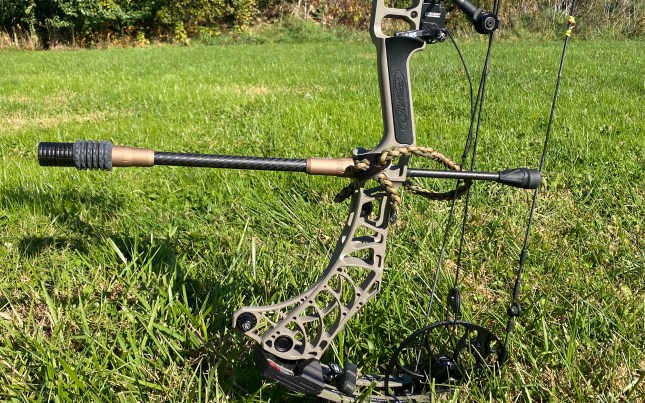Why Bow Stabilizers Issue: Boost Your Capturing Precision Today!
Why Bow Stabilizers Issue: Boost Your Capturing Precision Today!
Blog Article
Optimize Your Archery Accuracy With These Bow Stabilizer Strategies
One critical aspect that can dramatically influence your performance is the correct utilization of bow stabilizers. Whether you are a skilled archer looking to improve your skills or a newcomer anxious to improve your accuracy, mastering these bow stabilizer methods could be the secret to striking your mark with unrivaled uniformity.
Benefits of Utilizing Bow Stabilizers
Utilizing bow stabilizers can substantially boost an archer's accuracy and overall performance by reducing bow torque and resonance. Furthermore, bow stabilizers dampen resonance, which not just boosts the comfort of shooting however likewise stops the bow from jumping upon launch, therefore assisting in preserving correct purpose.
Moreover, bow stabilizers can help in holding the bow consistent, specifically throughout windy problems or when firing from longer ranges. The added weight at the front of the bow offers security and equilibrium, allowing the archer to concentrate on intending without the disturbance of bow movement. On the whole, the advantages of making use of bow stabilizers expand past simply precision, improving the archer's experience and efficiency in numerous shooting situations.
Picking the Right Bow Stabilizer
Choosing the appropriate bow stabilizer is vital for maximizing your archery tools and boosting shooting performance. Much heavier stabilizers can help reduce bow torque and absorb even more vibration, leading to a steadier purpose.

Lastly, think about the layout of the stabilizer. Some stabilizers include flexible weights or dampeners that allow you to personalize the equilibrium and feel of your bow. Eventually, picking the appropriate bow stabilizer involves discovering an equilibrium between weight, size, material, and design to improve your shooting precision and total efficiency.
Proper Installment Strategies
To make certain ideal performance and safety and security in archery, mastering proper installment methods for your bow stabilizer is essential. The initial step in installing a bow stabilizer is to identify the appropriate placement on your bow. A lot of stabilizers are affixed to the front of the riser, listed below the grip, to assist counterbalance the weight of devices such as quivers and views. Make sure that the stabilizer is not get more conflicting with other parts or preventing your capturing form.
Following, securely attach the stabilizer to the bow making use of the proper placing hardware. Some stabilizers come with adjustable weights that can be added or removed to make improvements the balance of your bow.

Adjusting Stabilizer Weight and Size
After guaranteeing the correct installation of your bow stabilizer, the following action entails changing the weight and length to optimize its performance in improving archery accuracy. The weight of my link the stabilizer plays a vital role in lessening bow activity during the shot cycle.
A longer stabilizer can supply greater security by increasing the range in between the bow and the weight at the end of the stabilizer. Conversely, a shorter stabilizer uses extra maneuverability and may be preferred by archers who value dexterity and fast motions during shooting.
Advanced Stabilizer Tuning Tips
Accomplishing optimum bow stability and accuracy in archery requires a nuanced strategy to innovative stabilizer tuning. Advanced stabilizer adjusting involves fine-tuning various components to boost the bow's equilibrium, decrease resonance, and improve overall accuracy.
Another vital aspect of advanced stabilizer adjusting is maximizing the damping buildings of the stabilizer system. Exploring different materials for the stabilizer construction, such as carbon fiber or light weight aluminum, can likewise affect the bow's performance by changing its weight circulation and tightness.
Conclusion
In final find here thought, making best use of archery accuracy can be achieved with the appropriate option, installation, and adjustment of bow stabilizers. Overall, incorporating bow stabilizers into archery practice can lead to enhanced efficiency and increased accuracy.
Making use of bow stabilizers can considerably improve an archer's accuracy and total performance by decreasing bow torque and vibration. Longer stabilizers offer greater security and balance, particularly for long-distance capturing, while much shorter stabilizers provide more convenience and are less complicated to maneuver in tight areas (bow stabilizer). Carbon fiber stabilizers are sturdy and lightweight, while light weight aluminum stabilizers are robust and provide superb vibration wetting
A longer stabilizer can give greater stability by increasing the range between the bow and the weight at the end of the stabilizer.Another essential facet of advanced stabilizer adjusting is maximizing the damping homes of the stabilizer system.
Report this page